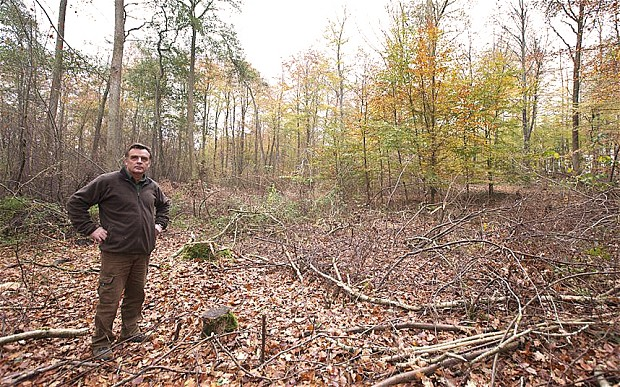Mortality of biggest and oldest trees around the world is increasing rapidly, study warns
By JIM ROBBINS
7 December 2012 The death rate of many of the biggest and oldest trees around the world is increasing rapidly, scientists report in a new study in Friday’s issue of the journal Science. They warned that research to understand and stem the loss of the trees is urgently needed. “It’s a worldwide problem and appears to be happening in most types of forest,” said the study’s lead author, David Lindemayer, a professor at Australian National University and an expert in landscape ecology and forest management. The research team found that big, old trees are dying at an alarmingly fast clip around the world at all latitudes – Yosemite National Park in California, the African savanna, the Brazilian rain forest, Europe and the boreal forests around the world. They described the cause as a combination of factors, from a hotter, drier climate in many places to logging, land clearing, changes in fire prevention and management policies, insect attacks and diseases. The die-off of these 100-to-300-year-old trees raises concern, the researchers say, because they sustain biodiversity to a greater degree than many other components of the forest. “Big, old trees are not just enlarged young trees,” said Jerry F. Franklin of the University of Washington, a co-author of the study who has studied old-growth forest for 45 years. “Old trees have idiosyncratic features – a different canopy, different branch systems, a lot of cavities, thicker bark and more heartwood. They provide a lot more habitat and niches.” Big trees also supply abundant food for numerous animals in the form of fruits, flowers, foliage, and nectar, noted Bill Laurance, another co-author, from James Cook University in Australia. “Their hollows offer nests and shelter for birds and animals” and “their loss could mean extinction for such creatures,” he said. Old trees store large amounts of carbon, recycle soil nutrients and play a role in the flow of water and climate within an ecosystem. When a forest is disturbed by wildfire, a wind storm or other events, Dr. Franklin said, those older trees begin the recovery process by providing seeds as well as habitat for other species that help the forest re-establish itself. The genes of these big, old trees could also be critical. “Genetic diversity represents options,” Dr. Franklin said. “They are genes we may want to utilize in the future.” And experts say there is a great deal about trees and forests that is not known. “It is a very, very disturbing trend,” Dr. Laurance said. “We are talking about the loss of the biggest living organisms on the planet, of the largest flowering plants on the planet of organisms that play a key role in regulating and enriching our world.” The experts first noticed the increase in tree mortality when they examined Swedish forestry records going back to the 1860s. Meanwhile, a three-decade study of mountain ash forest in Australia found that more trees were dying in forest fires and at 10 times the usual rate from drought, increasing temperatures, and logging. The study is only the latest among many reports of how climate change and other factors are taking a severe toll on the world’s forests. British Columbia, for example, is ground zero for a giant forest die-off that is occurring across the Rockies. More than 53,000 square miles of forest there has died in the last decade. The largest previous die-off, in the 1980s, spanned 2,300 square miles. Experts say that the old-growth bristlecone pines of the West, some nearly 5,000 years old, will probably be decimated by the spread of a fungal disease in concert with attacks by bark beetles. While the trees grow at high elevations that were once most inhospitable terrain, mountain warming has allowed beetles to survive there. Federal officials are gathering seeds from disease-resistant bristlecone pines in hopes of growing new trees that can survive. A new fungal disease that is attacking Britain’s beloved ash trees has been front-page news there. It is feared that the fungus could claim more than 90 percent of Britain’s ash, as it has elsewhere in Europe. The authors of the study have called for a worldwide investigation of the loss of the trees, the protection of areas where the big trees have their best chance at survival, and new tree planting.
